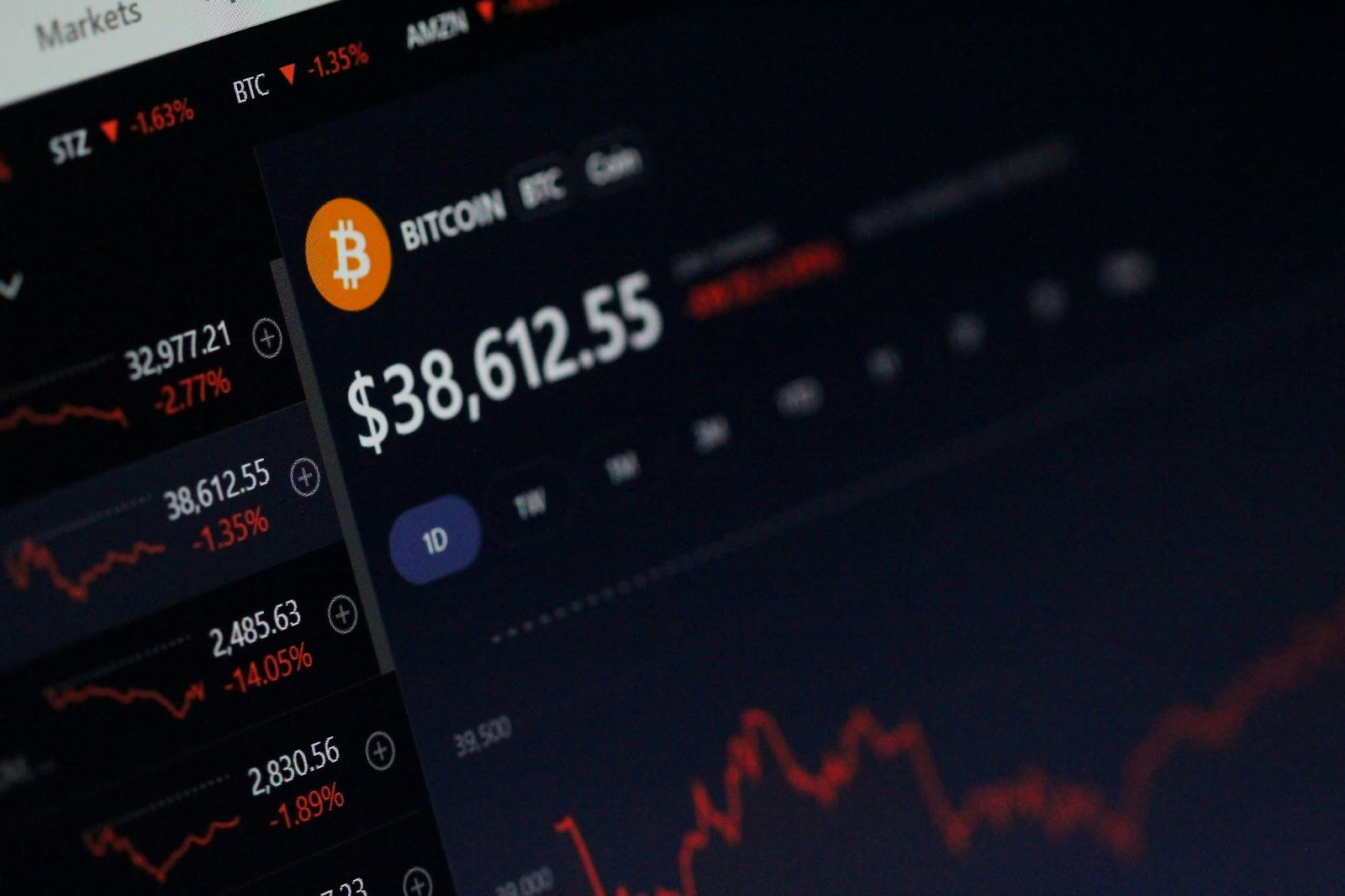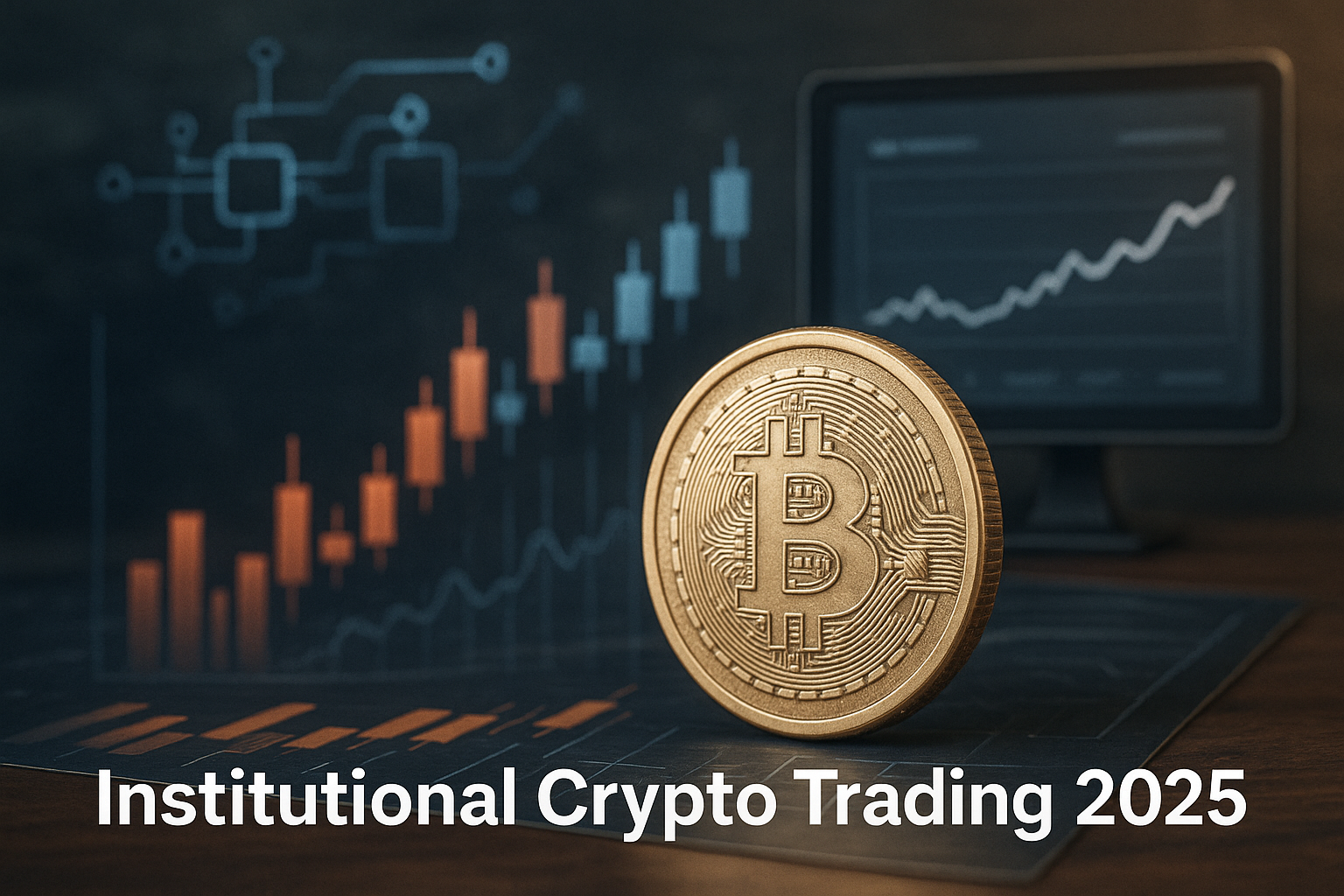Explore how hedge funds, AI, and blockchain are reshaping institutional crypto trading 2025.
The crypto market isn’t just a playground for retail traders anymore. In 2025, the big players have arrived—and they’re playing to win. Hedge funds, pension giants, and even sovereign wealth funds are moving billions into digital assets. The game has changed.
Institutional crypto trading 2025 is no longer about hype or speculation. It’s about structured strategies, risk management, and long-term positioning. The moves are bigger, the stakes are higher, and the competition is sharper than ever.
What’s driving this shift? Clearer regulations, smarter technology, and a growing belief that blockchain is here to stay. Institutions are no longer dipping their toes—they’re diving in headfirst. And as they do, they’re reshaping the market in ways retail traders never could.
In this article, we’ll explore how hedge funds craft their crypto strategies, where large-scale investments are flowing, and what this means for the future of finance.
What Institutional Crypto Trading Really Means

When people imagine crypto trading, they often think of a solo trader at a screen, reacting to price changes. But crypto for institutional investors is a completely different scene. It’s bigger, more planned out, and far less about sudden reactions—more about strategy and precision.
Institutions aren’t chasing “the next big token” on a whim. They’re creating balanced portfolios, running risk assessments, and making trades large enough to shift entire markets.
Who’s in the Game?
“Institutional” includes many types of investors:
- Hedge Funds – Quick movers using complex strategies and algorithms.
- Venture Capital Firms – Funding blockchain startups and new tokens.
- Pension Funds – Aiming for steady, long-term exposure to crypto.
- Sovereign Wealth Funds – Adding digital assets to national investments.
- Family Offices – Growing and protecting high-net-worth clients’ crypto holdings.
These players bring not just large sums of money, but also strict processes. Their trades are carefully planned, constantly tracked, and supported by solid research.
How It Differs from Retail Trading
Retail trading is usually fast, reactive, and often emotional. A single social media post can send thousands of traders rushing to buy or sell.
Institutions, however, take a different route. They depend on:
- Data-focused choices – Guided by analytics and AI.
- Long-term plans – Looking months or even years ahead
- Large transactions – Moving millions at a time, often in stages to avoid big market swings.
This slower, more calculated approach doesn’t just change how they trade—it reshapes how the whole market moves.
Why Institutions Are Here Now
In the past, uncertainty kept many away. Rules weren’t clear, the tech wasn’t mature, and safety was a question mark.
Now, regulated exchanges, insured storage, and compliance-friendly platforms have changed the game. For big investors, this is the opening they’ve been waiting for. The same volatility that scares smaller traders? Institutions see it as a chance—if managed wisely.
The Ripple Effect on the Market
Institutional entry changes everything. Liquidity improves. Certain assets can see more stable prices. The focus shifts from quick gains to building long-term value.
It also means retail traders aren’t steering market trends as much as before. With deep pockets and even deeper patience, institutions can steady markets—or move them into entirely new directions.
In short, institutional crypto trading in 2025 isn’t just about larger amounts of money entering. It’s about changing the rules of the game. From planning to execution, everything is more methodical, more professional, and in many ways, unstoppable.
Hedge Fund Crypto Strategies in 2025

Hedge funds have always thrived on complexity, speed, and precision—and in the crypto space, that mindset shines even brighter. By 2025, their playbook is more refined than ever. Institutional crypto trading 2025 isn’t just about buying and holding. It’s about using multiple, sophisticated strategies to squeeze value from every market condition.
Arbitrage: Profiting from Price Gaps
Crypto prices can vary slightly between exchanges or even between countries. Hedge funds exploit this with lightning-fast trades—buying low in one place and selling high in another. It’s not glamorous, but at scale, it can generate millions. The trick lies in speed, technology, and near-perfect execution.
Algorithmic & Quantitative Trading
If there’s a heartbeat in the market, algorithms can hear it. Hedge funds run AI-powered bots that scan thousands of price points, market indicators, and blockchain data every second. These bots don’t get tired, emotional, or distracted. They trade with cold logic, turning tiny market signals into big opportunities.
Long/Short Positions for Volatility Control
Crypto is volatile—sometimes violently so. Hedge funds hedge (pun intended) by taking both long and short positions. If prices rise, the long positions win. If they fall, the short positions cover the losses. It’s a balancing act that requires constant monitoring but keeps portfolios steady in choppy waters.
Yield Farming & Staking at Scale
DeFi isn’t just for adventurous retail investors anymore. Hedge funds are now locking massive amounts of capital into yield farming protocols and staking pools. The goal? Generate steady, passive returns on top of their active trading profits. With millions at play, even a small percentage yield translates into serious money.
Tokenized Assets & Structured Products
Not all bets are placed on volatile coins. Many funds invest in tokenized versions of real-world assets—like real estate, commodities, or corporate bonds—blending traditional finance security with blockchain efficiency. Others create structured crypto products, offering clients exposure to digital assets with built-in risk protections.
The Common Thread: Precision and Scale
Every one of these strategies depends on two things: precision and scale. Hedge funds aren’t chasing hype—they’re building systems that work whether the market’s bullish, bearish, or sideways. They operate like chess players, thinking several moves ahead, adjusting positions with surgical accuracy.
In short, hedge funds in 2025 aren’t just participants in the crypto market—they’re architects of it. Their strategies set the tone, influence liquidity, and shape price movements. And as institutional crypto trading 2025 matures, these funds will continue to be the silent engines powering its growth.
Large-Scale Crypto Investments: Trends & Opportunities

When big players move their money, you feel it. In 2025, those moves aren’t just shaking the market—they’re shaping its very core. Institutional crypto trading this year isn’t only about lightning-fast deals. It’s about building positions big enough to leave a mark for years ahead.
Bitcoin Still Leads, but Ethereum’s Closing In
For most institutions, Bitcoin is still the comfort zone. It’s liquid, trusted, and often called “digital gold.” But Ethereum is creeping up fast, powering smart contracts, DeFi platforms, and NFTs. Plenty of funds now split their bets Bitcoin for safety, Ethereum for growth.
Layer-1 and Layer-2 Take the Stage
It’s no longer just a BTC and ETH game. Capital is flowing into Layer-1 chains like Solana and Avalanche, plus Layer-2 networks like Arbitrum and Optimism. These are built for speed, low fees, and scaling—exactly what mass adoption will need.
DeFi Goes Institutional
The wild west days of DeFi are fading. Big funds are stepping in, lending, borrowing, and providing liquidity only now it’s on platforms that tick all the compliance boxes. They get the yields without the sleepless nights over security.
Real-World Assets, Tokenized
One of the hottest shifts? Turning things like property, gold, and corporate debt into blockchain tokens. Institutions love it—it mixes the steadiness of real assets with the speed and transparency of crypto.
Buying More Than Coins
The shopping list isn’t just tokens. Institutions are snapping up entire businesses—exchanges, blockchain infra providers, you name it. Mergers and acquisitions are becoming a way to secure influence for the long haul.
Why It All Matters
These moves don’t just bump up prices. They push infrastructure forward, bring in clearer rules, and attract new players from small traders to governments. When billions commit, the message is loud: this space is here to stay.
Big picture? Institutional investing in 2025 is calculated, spread out, and aimed at the long term. It’s not about chasing the coin of the week. It’s about finding the projects that can survive the storm and betting big on them.
The Regulatory Landscape in 2025

If there’s one thing that could decide the fate of institutional crypto trading in 2025, it’s regulation. For years, the rulebook felt half-written—pages missing, sentences crossed out, and new lines scribbled in overnight. Now, at last, the picture is starting to sharpen.
Clearer Rules, Bigger Players
Governments have stopped pretending crypto might vanish. Instead of swinging bans around, they’re putting down proper guardrails. And that’s changed the whole mood. Institutions that once hovered on the edge, wary of legal grey zones, are finally stepping in with both feet.
United States: Stricter but Safer
In the US, the SEC and CFTC have turned the screws on reporting requirements. More forms, more checks—yes. But in return? A safer playground. Regulated exchanges, custody firms, and trading platforms mean big players can operate without losing sleep. That trade-off is worth it.
Europe: The MiCA Effect
Over in the EU, the Markets in Crypto-Assets (MiCA) framework has tidied up the mess between member states. Now, funds can move across borders without bumping into a new set of rules every time. For large investors, it’s a shortcut—less paperwork, faster market access.
Asia-Pacific: Fast Growth, Mixed Rules
Asia is still uneven ground. Singapore and Hong Kong are rolling out the welcome mat for regulated crypto innovation, pulling in hedge funds and family offices from all over. Other countries? Still holding tight to restrictions. But overall, the needle’s moving toward open and well-supervised markets.
Why Regulation Helps, Not Hurts
Some traders worry rules will squeeze out the thrill. Institutions see it differently. Structure brings legitimacy. With clear frameworks, they can invest heavily without fearing sudden bans or mystery tax laws. Plus, it’s a shield against fraud and market manipulation—the very things they dread most.
A Catalyst for Mainstream Adoption
Each new law, license, or policy chips away at crypto’s “wild west” image. And every step toward stability boosts institutional trust. The ripple effect? More liquidity, better infrastructure, a sturdier market.
So no, the regulatory climate in 2025 isn’t perfect. But compared to a few years ago, it’s practically a different world. And for institutional crypto trading, those clearer rules aren’t just nice to have—they’re the foundation that turns a volatile frontier into a serious, investable asset, right up there with stocks, bonds, and real estate.
Role of Custody Solutions & Security

In institutional crypto trading, 2025 isn’t just about speed or strategy—it’s about trust. And trust starts with custody. When billions of dollars are on the line, leaving funds parked on an exchange simply isn’t an option. Security isn’t a luxury anymore; it’s the bare minimum.
Why Custody Is Everything
For large investors, holding digital assets is no casual hobby. We’re talking about guarding vast portfolios where one mistake could mean headlines, lawsuits, and reputations in pieces. That’s why the smartest players put secure, compliant custody solutions at the very center of their game plan.
Who’s Leading the Charge
Custody today is nothing like the basic wallets of crypto’s early days. By 2025, providers such as Anchorage, Coinbase Institutional, and BitGo have built fully regulated, insured, and audit-ready vaults. And these aren’t just vaults—they connect directly with trading desks, lending platforms, and compliance systems, so assets can move when needed without opening the door to unnecessary risks.
Cold Storage Meets Multi-Signature Control
Offline storage is still the crown jewel of security. Keep assets disconnected from the internet, and hackers are locked out. But the real magic comes when it’s paired with multi-signature approval. Think of it as several keys for one vault—nobody gets in alone, and every move is verified by multiple people.
Insurance: The Safety Net Nobody Talks About
Even the best setups can’t promise perfection. That’s why the top custody firms back their systems with insurance. It covers theft, insider fraud, and even some technical failures. For institutions, that’s a layer of peace of mind you simply can’t put a price on.
Finding the Balance
The trick is keeping assets safe without slowing trades to a crawl. Some providers now use a hybrid approach—most funds in cold storage, a smaller portion online for instant action. That way, they’re ready for market moves without sacrificing the fortress-like protection around their reserves.
The Foundation of Confidence
Without rock-solid custody, the rest of institutional crypto trading collapses. This isn’t just about holding coins—it’s about building the infrastructure that lets hedge funds, pension funds, and other giants treat crypto as a serious, manageable asset class.
In the end, custody is the quiet backbone of this entire market. It’s what allows big players to step in, move confidently, and stay in the game—no matter how volatile the digital asset space becomes.
Impact of AI & Blockchain Infrastructure on Institutional Strategies

In 2025, technology isn’t just helping institutional crypto trading—it’s completely changing it. Artificial intelligence and advanced blockchain systems have become essential. They now power strategy, speed, and risk control for large-scale trading.
AI: The Sharpest Market Mind
In big-money trading, AI now handles the toughest work of market study. It scans live price movements, blockchain activity, and even news or social media trends. It spots patterns that people often miss and reacts instantly.
For hedge funds, this isn’t just about faster trades—it’s about accuracy. AI can highlight the best times to buy or sell, warn of unusual market shifts, and even forecast possible price changes before they happen. The result? Fewer risky, emotional trades and more choices backed by solid data.
Adapting Algorithmic Trading
AI also fuels smarter automated trading. These systems don’t stick to one fixed plan—they adjust in real time. If prices swing wildly, they manage risk. If the market’s liquidity drops, they change how orders are filled. This lets big players move millions without shaking the market.
Blockchain: The Hidden Backbone
Behind the action, blockchain technology works quietly but powerfully. Fast Layer-2 networks like Arbitrum and Optimism allow cheaper, quicker trades—vital for high-speed strategies. Cross-chain bridges make it easy to shift funds between networks, creating more investment openings.
More Blockchains, More Options
By 2025, big institutions are no longer stuck on one chain. With tools that connect different blockchains, they can spread investments across Bitcoin, Ethereum, Solana, and more—all managed from one place. This brings efficiency, lowers operational risk, and opens new strategies.
Live Risk Monitoring
One of AI’s biggest strengths is constant risk tracking. It checks exposure, liquidity, and partner risks in real time. If something unusual happens—like a sudden drop in collateral—AI can instantly trigger safety measures.
Why This Edge Is Crucial
In a 24/7 market, technology gives institutions a serious advantage. AI and blockchain don’t just help them act faster—they help them stay ahead of change. When billions are at stake, that’s priceless.
In short, AI and blockchain are no longer “optional extras.” They are now the foundation of institutional crypto strategies. In 2025, those who master these tools will lead the way. Those who don’t will be left following
Risk Management for Institutional Crypto Portfolios

In 2025, trading crypto at the big money level is not just about chasing profits. Protecting the money already in play is just as important. The market can turn wild without warning. Prices can move sharply, liquidity can dry up, and a single news story can send even strong coins down fast. Big traders know this, so they plan for the unexpected.
Spreading Investments to Lower Risk
Large funds rarely put all their holdings in one coin or token. Instead, they divide them between Bitcoin, Ethereum, smaller altcoins, stablecoins, tokenized real-world assets, and DeFi projects. This way, if one area falls hard, others can help steady the portfolio. Balance is key — leaning too much into one type of asset can cause big trouble.
Using Tools to Control Price Swings
Market ups and downs are normal in crypto. Large traders don’t just wait and hope — they use futures and options to protect their positions. If the price of Bitcoin drops, a short trade can cover some of the loss. If the price rises, they can still gain from it. It’s a way to be ready for both good and bad turns.
Managing Liquidity Smartly
Selling a big position too quickly can drag prices down. Holding for too long can lock up funds. To avoid this, trades are broken into smaller amounts and often handled through private deals instead of public exchanges. Some funds are always kept in assets that can be sold quickly when needed.
Checking Every Partner Carefully
Not every trading platform or lending service is safe. Big investors look into each one before trusting them. They check for strong security, insurance coverage, legal compliance, and a proven history. Trust has to be earned, not given.
Watching Risks All the Time
In 2025, risk control is not a monthly or weekly job — it’s non-stop. AI systems track portfolios day and night, spotting unusual activity, dangerous price exposure, or margin problems. This lets managers act before the situation gets worse.
Why the Approach Works
Risk will never disappear from crypto. The aim is not to avoid it completely but to keep it under control. By using a mix of diversification, price protection, liquidity planning, and constant monitoring, big players create a safety net. This allows them to keep trading even when the market is rough.
In the end, risk control is the quiet force that keeps large crypto portfolios stable. Without it, even the smartest plan could fall apart after one bad week in the market.
Challenges Institutional Traders Face in 2025

Institutional crypto trading in 2025 may look modern and well-organized from the outside, but the reality is still full of challenges. The rewards can be huge, but the dangers are just as big — and not all of them can be fixed with money or technology. Even the largest firms face issues that test their plans, skills, and patience.
Market Manipulation Risks
Even with stronger rules, market manipulation hasn’t gone away. Large investors can still change prices with big trades. Quick pump-and-dump moves or sudden sell-offs can break even the best strategies. Institutions must stay watchful and adjust fast to avoid heavy losses.
Counterparty and Platform Failures
Not every exchange, broker, or DeFi project is as reliable as it seems. Hacks, technical errors, or total shutdowns can block access to funds. For institutions, this is more than an inconvenience — it can mean millions of dollars stuck or lost.
Regulatory Uncertainty in Some Regions
While areas like the US and EU have more stable laws, other regions are less predictable. Sudden policy changes or outright bans can force institutions to leave a market instantly, ruining long-term plans and cutting profits.
Liquidity Limitations for Large Trades
Moving big amounts of crypto without changing the price is tricky. Even with deep liquidity, huge trades can cause slippage. Institutions often need to split orders into smaller trades or work with OTC desks, which can slow down the process.
Infrastructure Bottlenecks
Blockchain networks have improved but still have weak points. High fees, network congestion, or software bugs can delay trades. When markets move fast, even short delays can change profit into loss.
The Human Factor
Even with AI tools and automation, people still make the final call. Human errors, misreading data, or letting emotions take over can lead to big mistakes. In large trades, one wrong decision can wipe out weeks of gains.
Why These Challenges Matter
These problems are not just obstacles they shape how institutions work in crypto. They push for stronger security, better systems, and more flexible trading plans. Those who can adapt and stay alert can turn these same challenges into opportunities.
The Future Outlook for Institutional Crypto Trading Beyond 2025

Institutional crypto trading in 2025 may already feel like the start of something big, but the most exciting changes are still ahead. The next few years will bring faster systems, clearer rules, and a wider range of players. Institutions that adjust quickly will not just stay in the game, they’ll lead it.
Mainstream Adoption Becomes Normal
Right now, being in crypto gives institutions a small edge. After 2025, it could be completely normal. Pension funds, national wealth funds, and even traditional insurers might keep part of their investments in crypto. The negative image will fade, replaced by everyday use.
Clearer Rules Worldwide
One major challenge — unclear laws — will start to fade. Many countries are likely to introduce straightforward, enforceable regulations for digital assets. That means fewer sudden bans and more reliable guidelines. Institutions will know exactly how to operate without fear of unexpected rule changes.
Growth of Tokenized Assets
Crypto won’t just mean coins anymore. Real-world things like property, shares, and raw materials could be stored on blockchains. Tokenization could allow all-day trading, instant deals, and buying small fractions of assets. For institutions, this means easier access to money and faster transactions.
AI-Driven Trading on a Larger Scale
Automation is already important, but it’s going to grow even more. Advanced AI will read market data instantly, spot hidden trends, and make trades in milliseconds. Humans will focus less on placing trades and more on guiding overall strategies.
Better Cross-Chain Connections
By the late 2020s, moving assets between different blockchains will be smoother and cheaper. Institutions won’t be stuck on one network, they’ll be able to shift funds between chains without delays, opening the door for more complex trading methods.
Stronger Cybersecurity Battle
As profits grow, cyber attacks will become smarter. Institutions will need the latest protection, like AI-based fraud alerts, hardware wallets, and encryption that even future quantum computers can’t break. Security will become a major leadership concern, not just a tech team job.
Why the Future Looks Promising
Yes, there will still be risks, but the possibilities after 2025 are bigger than ever. With stronger systems, clear rules, and smarter tools, institutional crypto trading will become faster, safer, and more rewarding. The progress made in 2025 will be the launch pad for years of growth and innovation.
Conclusion
Institutional crypto trading in 2025 is not the end, it’s the beginning of a new chapter. We’re entering a time where old financial methods meet fresh digital ideas. The usual rules no longer apply, and the players are bigger, wiser, and better prepared than before.
With clear strategies and fast technology, success will go to those who adapt quickly and think for the future. This is about more than quick gains, it’s about helping shape how markets work worldwide.
Challenges will come, but one thing is sure: groups that act with purpose, use modern tools, and stay ready for change will guide the next stage of trading. The future is already moving. You should be too.

